After a promising MLS debut in 2021, Paxten Aaronson‘s start to 2022 hasn’t gone quite as planned. The Philadelphia Union’s midfield depth has him coming primarily off the bench, giving him the last 15 to 30 minutes per match.
A member of the USA U20 national team, Aaronson is currently in Honduras with the squad competing in the CONCACAF U20 Championship. They have just beaten the hosts by a score of 3-0. Who scored the first goal? None other than Aaronson.
This experience with the U20 national team is exactly what the doctor ordered. As a focal point on the team, his brace against Costa Rica secured the USA’s place in the U20 World Cup and the win against Honduras confirms their place at next summer’s Olympics.
A midfielder by trade, Aaronson has taken the pitch as a false nine, dropping between the lines and manipulating the opposition centre-backs with his intelligent off-the-ball movement.
Despite the lack of playing time in Philadelphia, Aaronson’s career trajectory could very well emulate his brothers, Brenden of Leeds United in the EPL. Both Aaronson brothers got their start in the Philadelphia Union academy. Both were physical late bloomers and Paxten is being watched closely by Red Bull Salzburg, his brother’s former club. Both brothers play as more advanced central midfielders. Both work very intelligently off the ball, and both have exceptional work rates.
The Aaronson brothers have many similarities. Once you’ve finished reading this scout report, have a look at Mak Pakhei’s recent tactical analysis of Brenden. In the meantime, this scout report will focus exclusively on Paxten’s game. Through tactical analysis, we’ll look at the 18-year-old’s skill set, showing through our analysis why Paxten could very well be the second Aaronson to make a big move this summer.
Football IQ
The Aaronson’s are largely regarded as the best sibling duo America has to offer. While Brenden is more of a box-to-box player, Paxten is closer to a true #10 who can also operate as a false nine.
In terms of Paxten’s starting position, you’ll often find him occupying one of the two half-spaces. He does have a preference for the left, which allows him to cut inside on his preferred right foot. Looking at the heat map below, his receiving locations light up in areas that correspond with a player who gets between the lines against both the mid and low blocks.
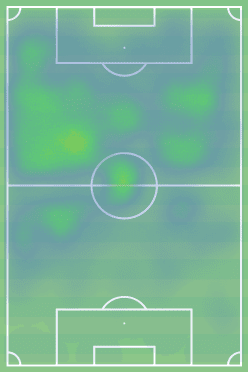
That assessment of Paxten’s heat map corresponds to the film analysis. Looking at the three image collage below, the top image comes from a US Cup match against Orlando City, the current club of former AC Milan wunderkind Alexandre Pato. As Philadelphia progressed up the left-wing, Aaronson, who was playing as one of two strikers in a 4-3-1-2, dropped into a massive pocket of space in midfield. From that position, he not only had ample time to receive and drive at the backline, but he also had excellent field awareness and body orientation to set his next action in motion.
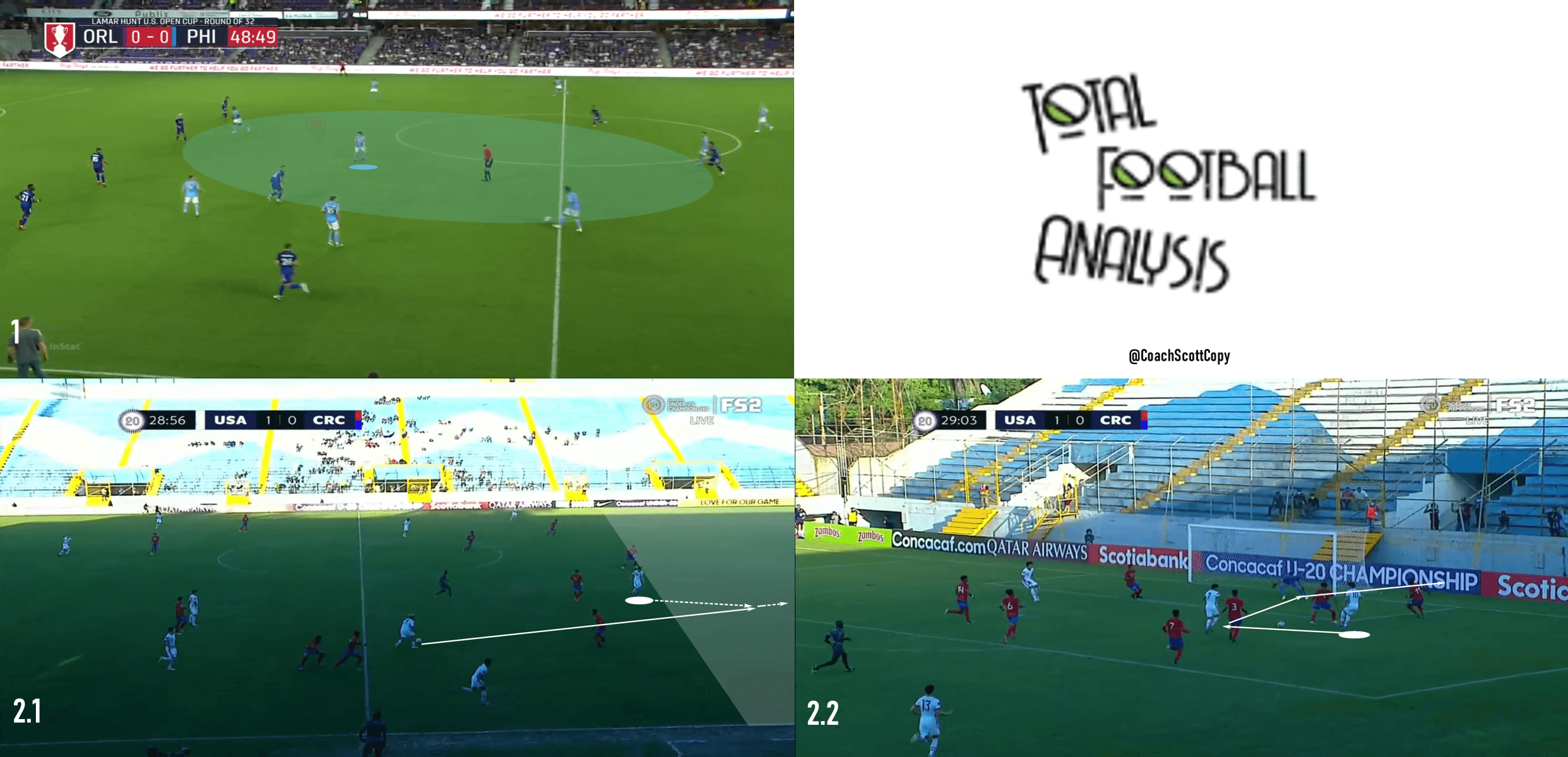
The bottom two images come from the CONCACAF U20 championship quarter-final against Costa Rica. Taking a page from Philadelphia’s scout report, manager Mikey Varas has the Union academy product playing the up top as a false nine. Seeing the Costa Rican backline become disorganized, Aaronson showed excellent awareness to push ahead of the two defenders on the near side while keeping himself onside. A through ball set him onto goal where he set up his Philadelphia Union teammate, Quinn Sullivan, for a close-range shot. Unfortunately for Sullivan, the Costa Rican goalkeeper, Bayron Gabriel Mora Montenegro, came through with one of several incredible saves to keep the margin at one.
With a brace against Costa Rica and another goal against Honduras in the semifinals, Aaronson has shown a reliable knack for goal against some of the continent’s toughest opponents in a difficult environment. At 1.75 m and 135 lb, Aaronson isn’t overpowering opponents either. Rather, using his football IQ and quickness to get into the right spaces at the right time to exploit opponent vulnerabilities.
That intelligent movement off the ball is perhaps the most important aspect of his game. He scans the pitch exceptionally well, always showing an understanding of where his teammates and nearest opponents are. The younger Aaronson takes up excellent starting positions, and then continuously adjusts his spatial orientation to stay better connected to his teammates and exploit any vulnerabilities in the opposition’s structure.
Looking at a sequence from the match against Orlando, Aaronson was dropped deeper into midfield and the second half, allowing him to play a more prominent role when Philadelphia had possession. Image number one shows him making a deep run from midfield to attack the space behind the Orlando city left-back. When the ball isn’t played, he uses a nice counter-movement to drop deeper, ridding himself of his mark. He receives a pass in image two and drives into the box, leading to a shot wide of the target to end the sequence.
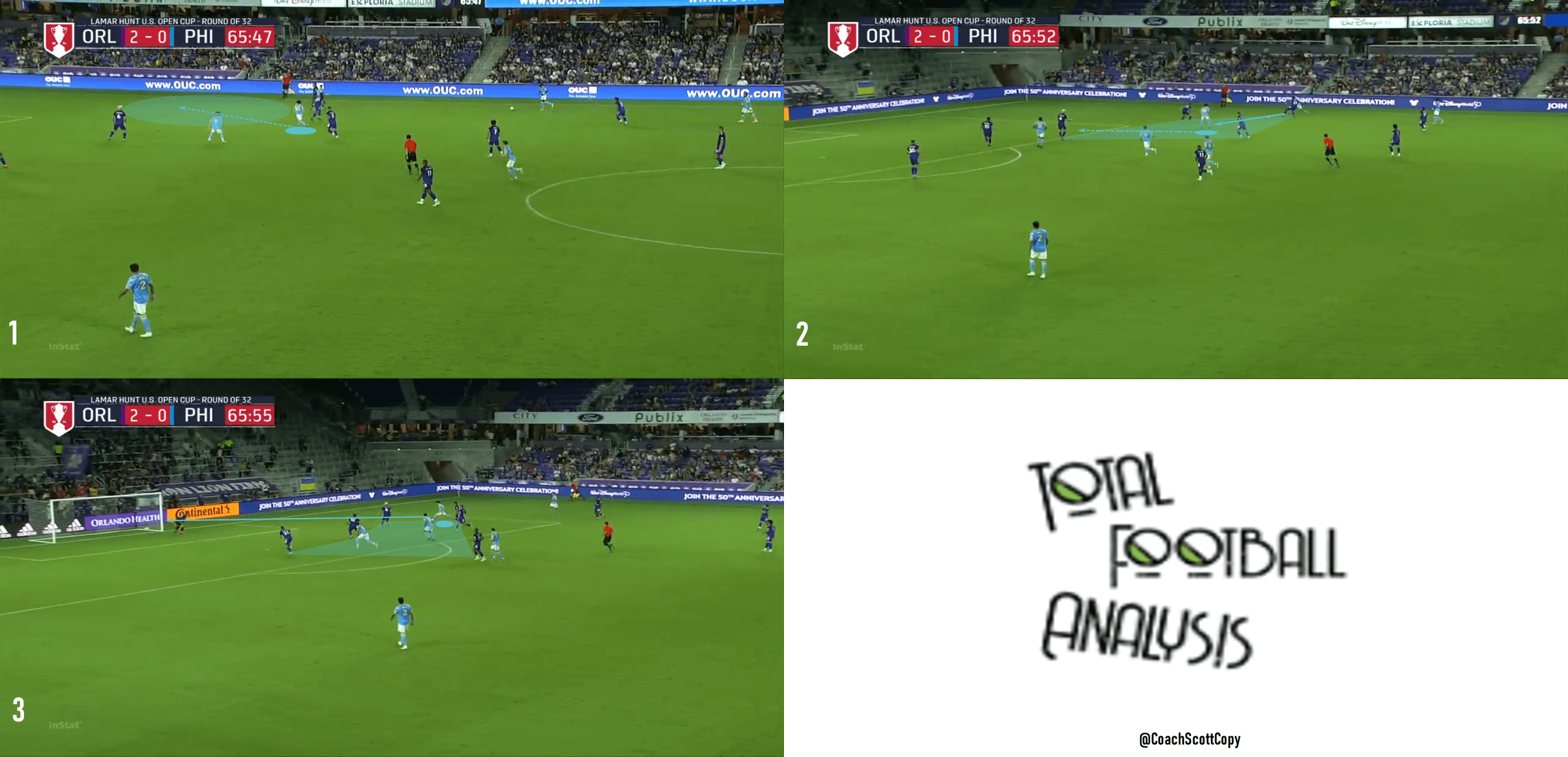
As you surely noticed in these examples, Aaronson best impacts the game when he can receive between the lines. He’s continuously searching out those spaces, which then allows him to run at the backline and use his vision to pick out runners. Against the New England Revolution, there’s a nice sequence in the 49th minute that not only showed his intelligent positioning between the lines, but also his attention to detail with regards to his body orientation and scanning. The first two images show exactly those qualities.
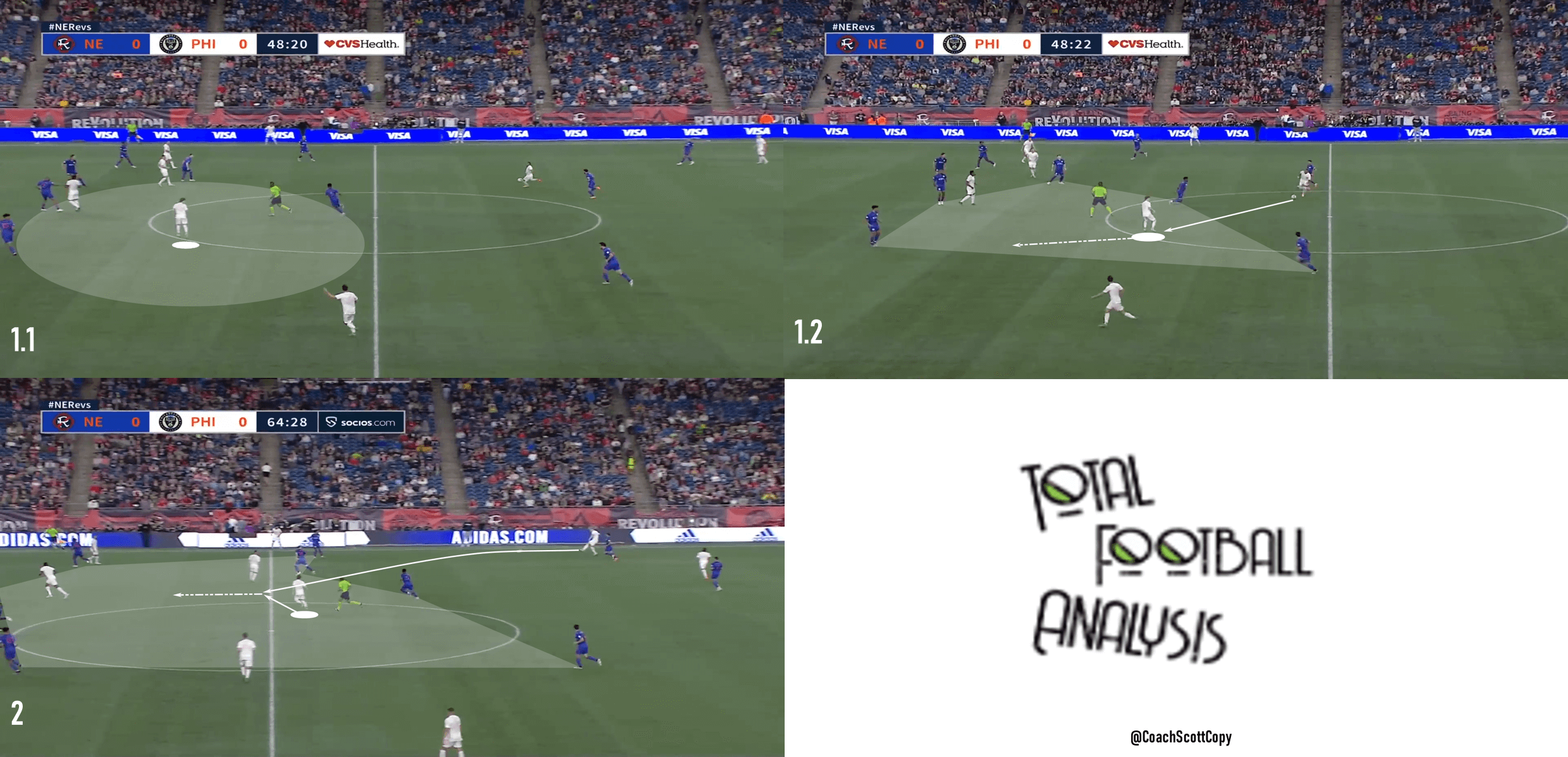
Finally, the lower half of that image shows us his positioning in the 65th minute. As Philadelphia is looking for that line-breaking pass to spur the progressive pass up the pitch, Aaronson does really well to not only find space between the lines but also adjust his movement to offer the split pass.
Locating and moving into space is one thing, but we so often see young players bumble the timing of their run. One thing you’ll notice with Aaronson is that he shows very good attention to detail as to when he should arrive in space. For example, against New England, Philadelphia was looking to play into the final third. Rather than instantly moving into the available space in Zone 14, Aaronson held his ground until he saw his teammate was ready to play forward.
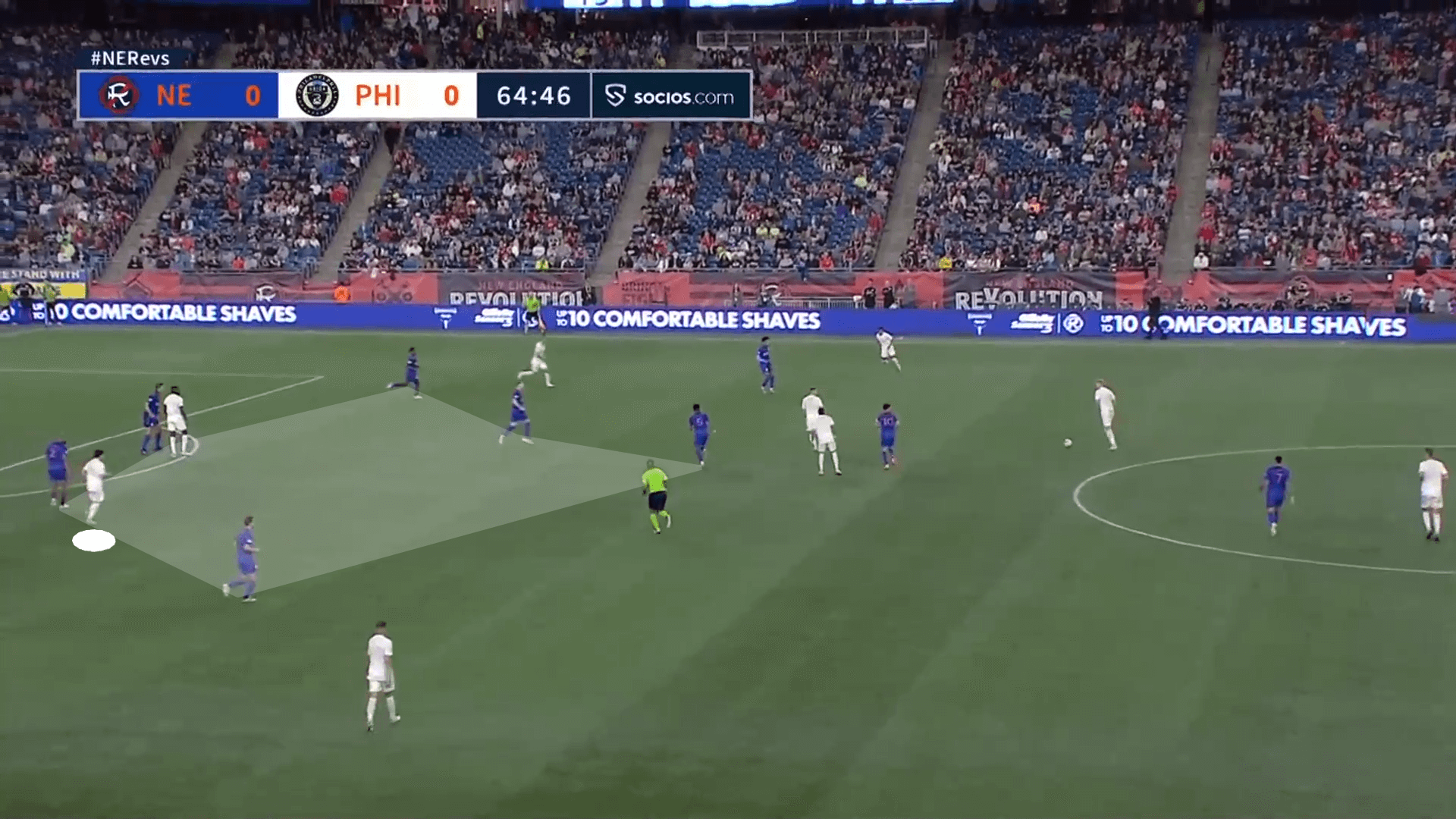
With that understanding of his teammate’s readiness, the youngster burst between the lines to offer the line-breaking pass. Though the pass doesn’t come his way, the timing of his run and his angle to the ball shows a player who understands the intricacies of off-the-ball movement.
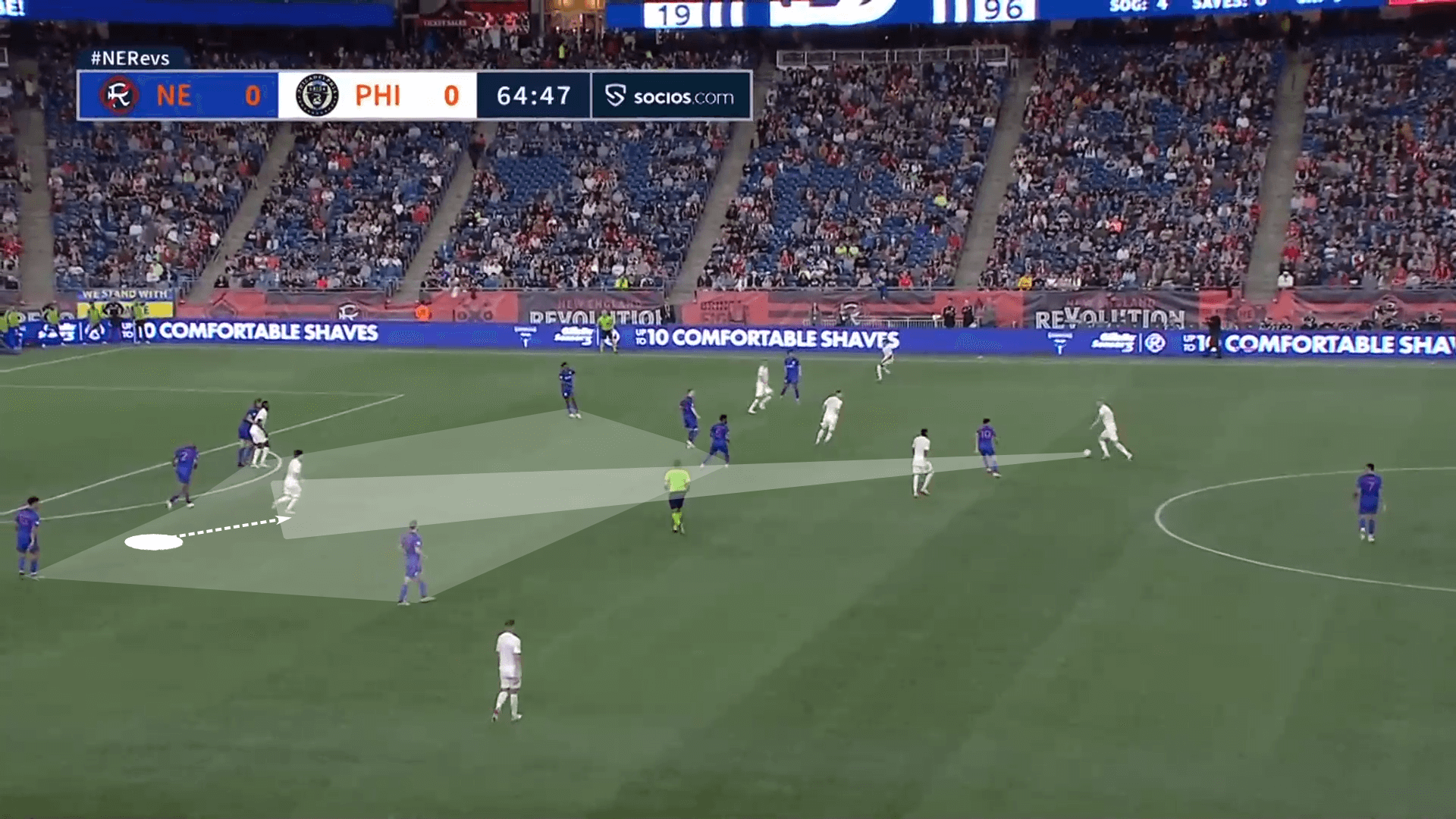
One of his great strengths is that he interprets the game very well. The diversity of his movements shows he’s a player who’s constantly searching out the best spaces for action.
Let’s look at one more example against New England. First, as the Union progress up the right wing, Aaronson is marked tightly. As his opponent shifts his focus to the ball and a potential threat deeper in the wing, Aaronson uses a quick counter-movement to dismark his opponent. That frees him to receive the pass in image two.
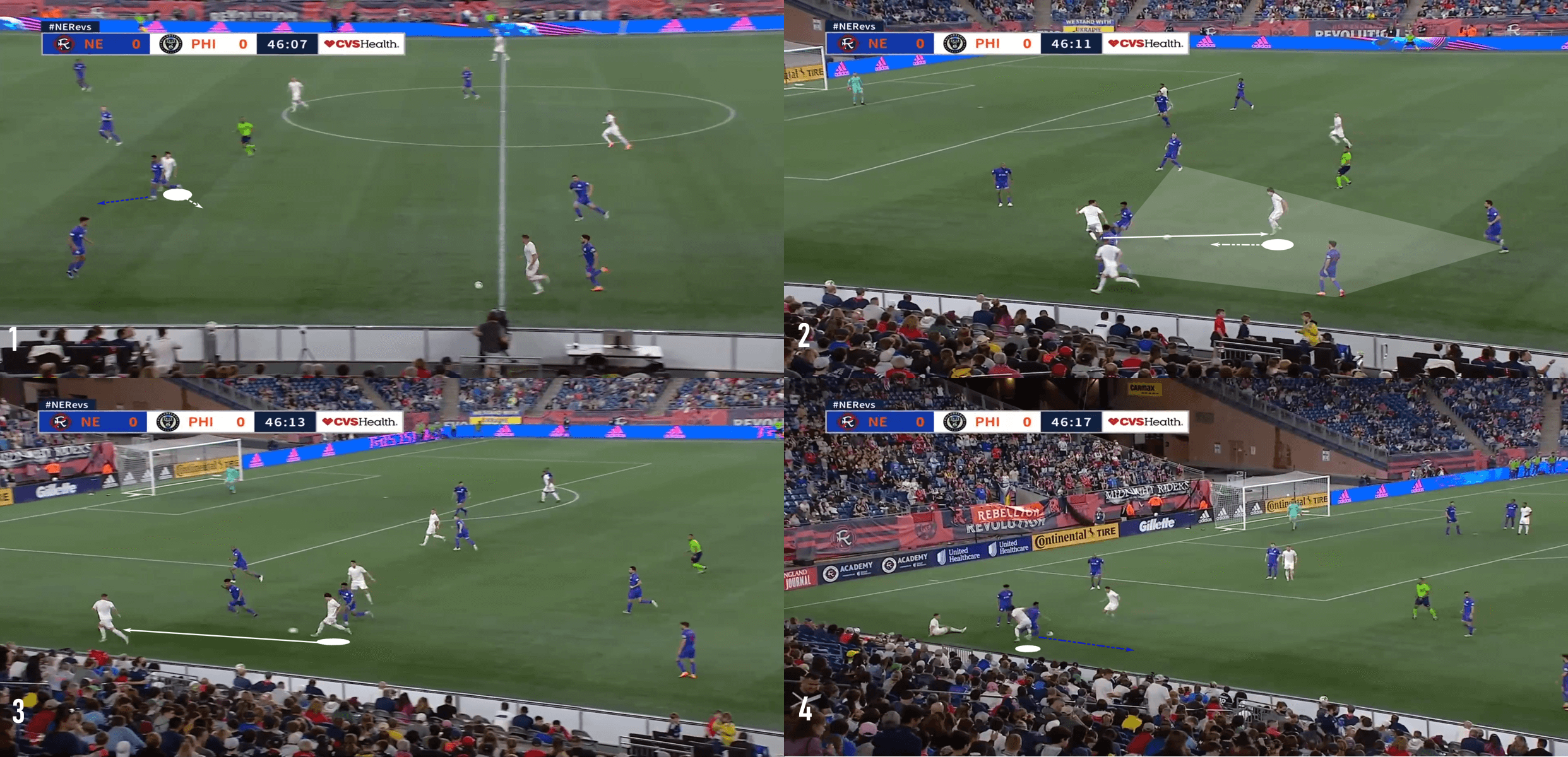
After getting into a forward-facing position against a flat-footed opponent, the Union Academy product beat his man in a 1v1, then played his teammate forward in the wing.
This does bring us to one of the weaknesses in his game. Though he does counterpress well, his slim stature does impact his success in tackles. In image four, the opponent turns on him and dribbles away far too easily. One thing that’s noticeable in the way Aaronson goes into tackles is that he’s far too upright and reliant on contact with the opponent’s upper body. He simply doesn’t have the strength to knock an opponent off the ball or manipulate their balance with that high contact. Getting lower as he enters tackles and making first contact with the opponent’s hips are too small adjustments he could make to have more success in the tackle.
With the ball at his feet
When you hear Brenden offer an analysis of his little brother, he’s very complimentary of Paxten’s finishing talent and ability to send the final pass. Those areas of his game have been on display at the CONCACAF U20 Championship.
Though he’s playing a different role with the USA than he typically does in Jim Curtain’s tactics, Paxten has shown that he’s a highly adaptable player. Whether operating as a central forward or an attacking midfielder, he looks to play in the same spaces. Receiving between the opposition’s midfield and back lines is how he best influences the game. If he can receive a forward-facing position, using his passing ability and vision to play more directly, he’s a player who’s very capable of playing the killer pass.
He may even find his own way to goal. That’s precisely what happened when you scored his first-ever MLS goal. Positioning himself perfectly between you the New England Revolution’s lines, Aaronson showed excellent body orientation and received on the half turn. In image three, he runs at the New England backline before hammering a shot with his left foot into the top left corner of the net.
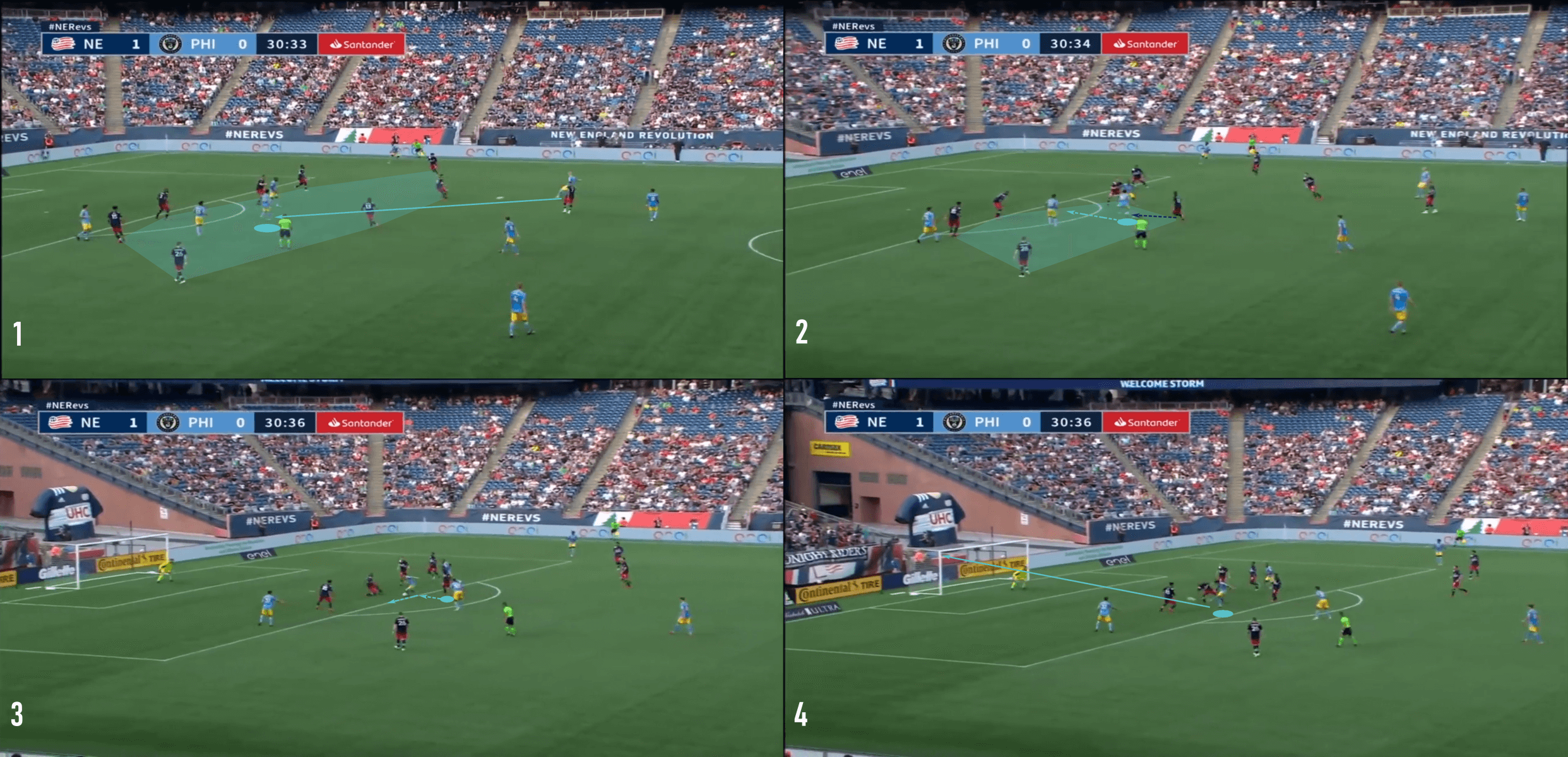
His body orientation has been a recurring theme in the scout report. He’s most effective when he can get into forward-facing positions to fully utilise his vision. Against Orlando City, we saw him run the Philadelphia counterattack in the 47th minute. From images one to two, we see him dismark from his opponent and burst into open space in the central channel as his first touch takes him in the direction of the next opponent. It’s a heavy touch which draws the defender forward in an attempt to end the play. However, Aaronson has the play under total control, slipping his teammate into space and image three, then finding a nice pocket of space at the top of the box in image four. He doesn’t receive the return pass, but, again, his positioning and body orientation are excellent. He’s ready to receive.
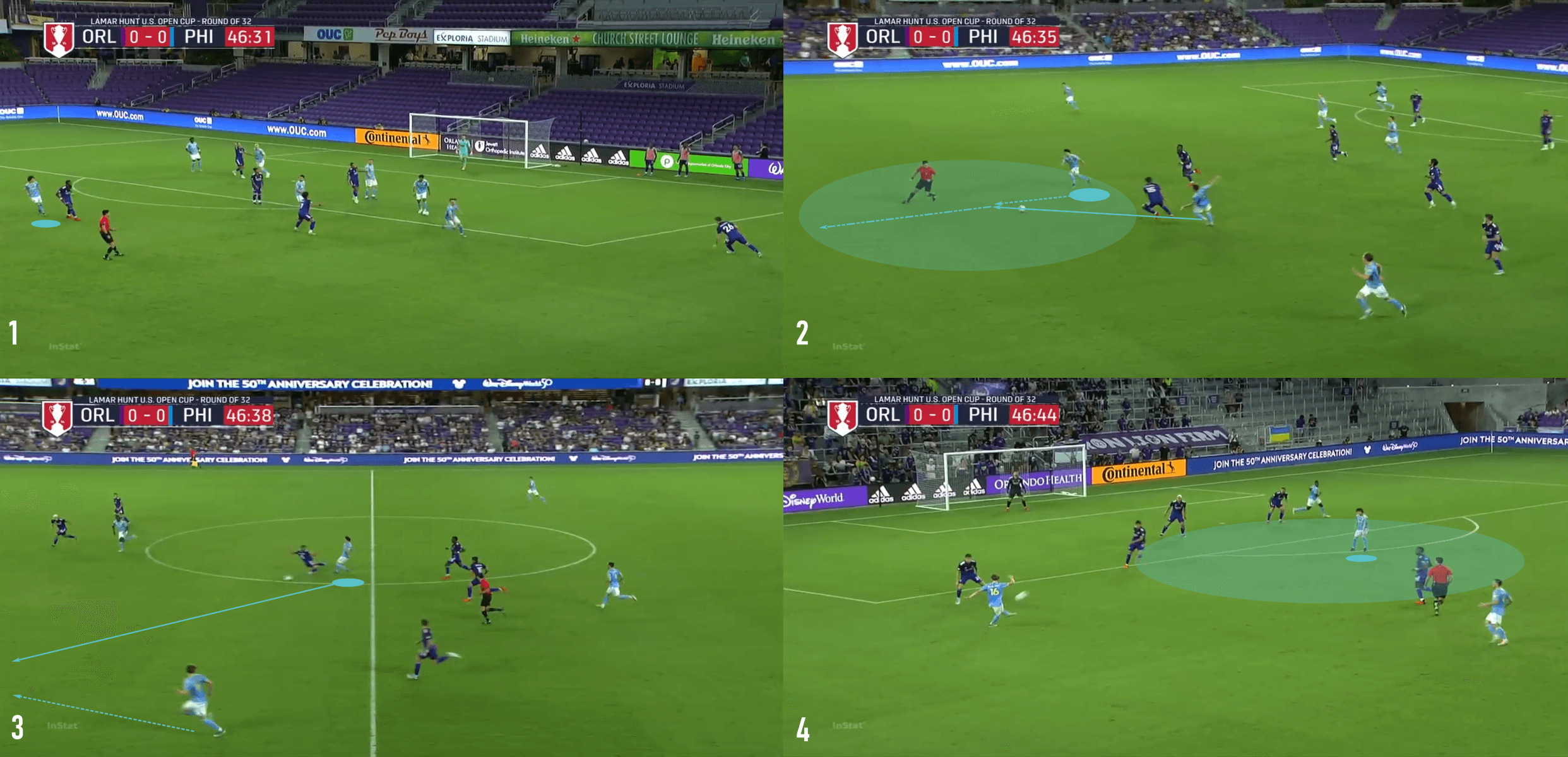
With his quickness and technical ability, Aaronson is a player with good press resistance. If he can avoid the full force of an opponent’s contact, he’s likely to keep the ball and make something of his touches.
When he does have the ball at his feet, the Medford, New Jersey native does very well to engage the first defender, which generally forces the second defender to stay more tightly connected on the off chance help is needed. Commanding multiple opponents’ attention gives his teammates more freedom to move throughout the opposition’s press. Willing runners greatly benefit from Aaronson’s approach to the game, just as we see below with this clever little outside of the boot past played over the Minnesota back line into the path of Sergio Santos.
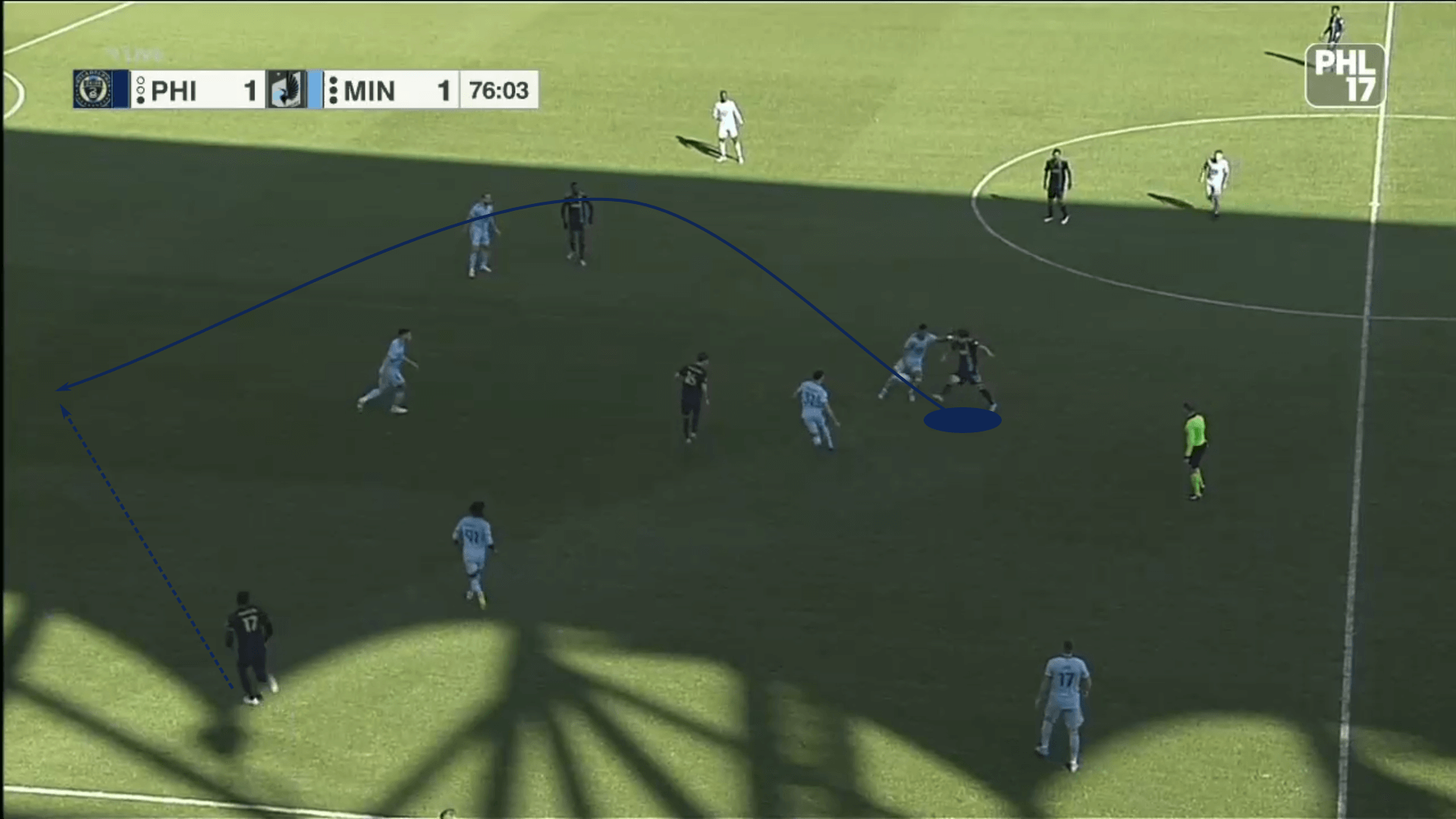
Finally, as the Union look for their box entry, Aaronson has a knack for popping up in Zone 14. Here he nearly threads the needle to Julian Carranza for a tying goal in the Lamar Hunt Cup.
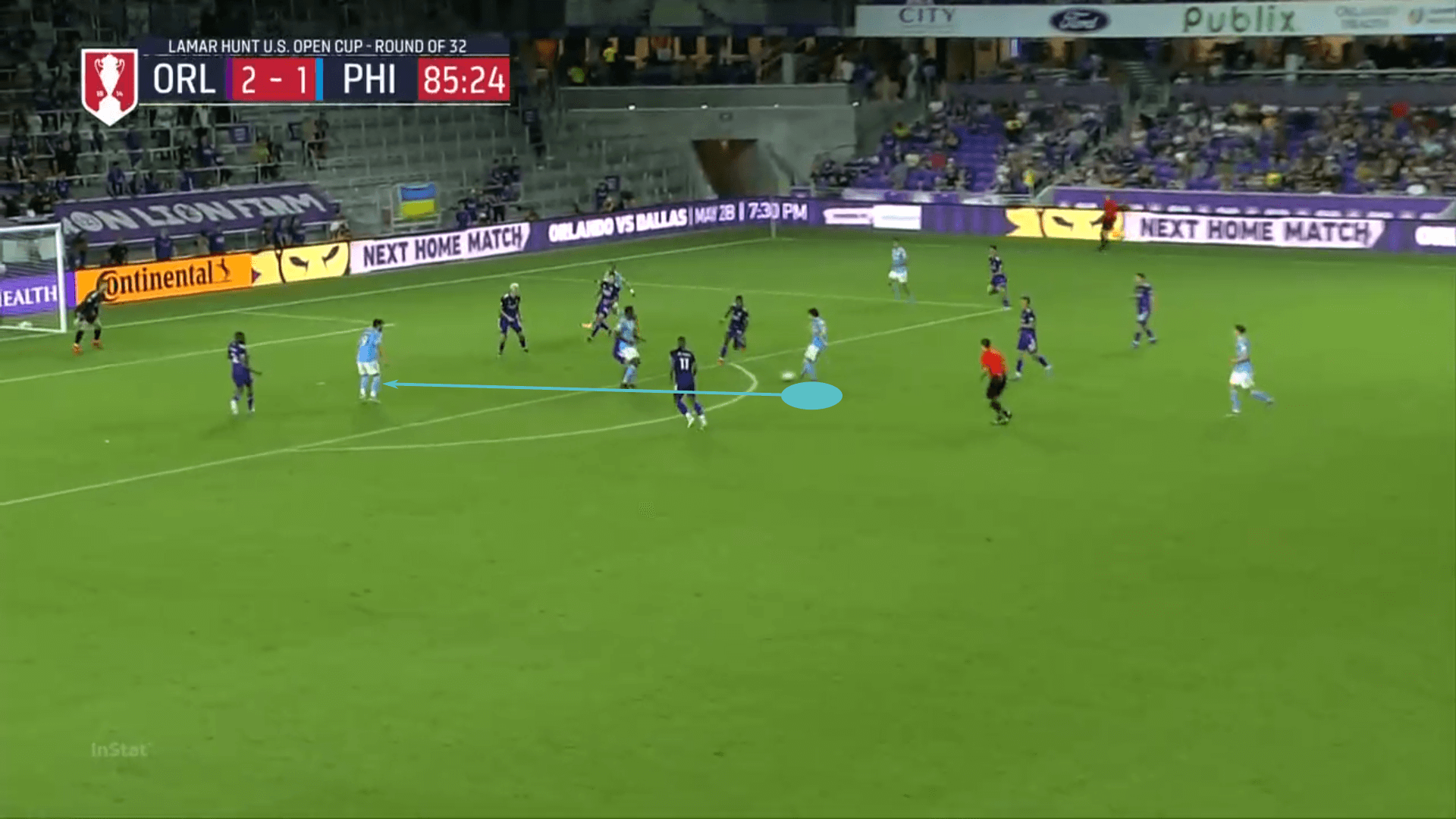
Much like his movement off the ball, Aaronson impresses with a variety of distributions in a wide range of circumstances. He’s a clever, creative player with one of the highest technical upsides among the American youth ranks. Add in his tactical intelligence and you can see why Red Bull Salzburg is rumoured to have interest in his services.
Defensive contributions
Looking now at his defensive contributions, it’s worth noting again that he’s not going to dominate a game with his physicality. With his lean build, Aaronson has to use his quickness, work rate and intelligence to make an impact when his side is out of possession.
That same intelligence that’s on display when his team is in possession, we see when the script is flipped. His spatial awareness and ability to read the first attacker’s intentions are core to his defending. He’s a player who’s willing to track back and help defend in midfield, especially as he identifies emerging threats in that part of the pitch.
Against New England, we saw him start higher up the pitch before identifying the next pass to Sebastian Lletget. Quickly dropping into midfield, Aaronson intercepted the pass to restart the Philadelphia attack.
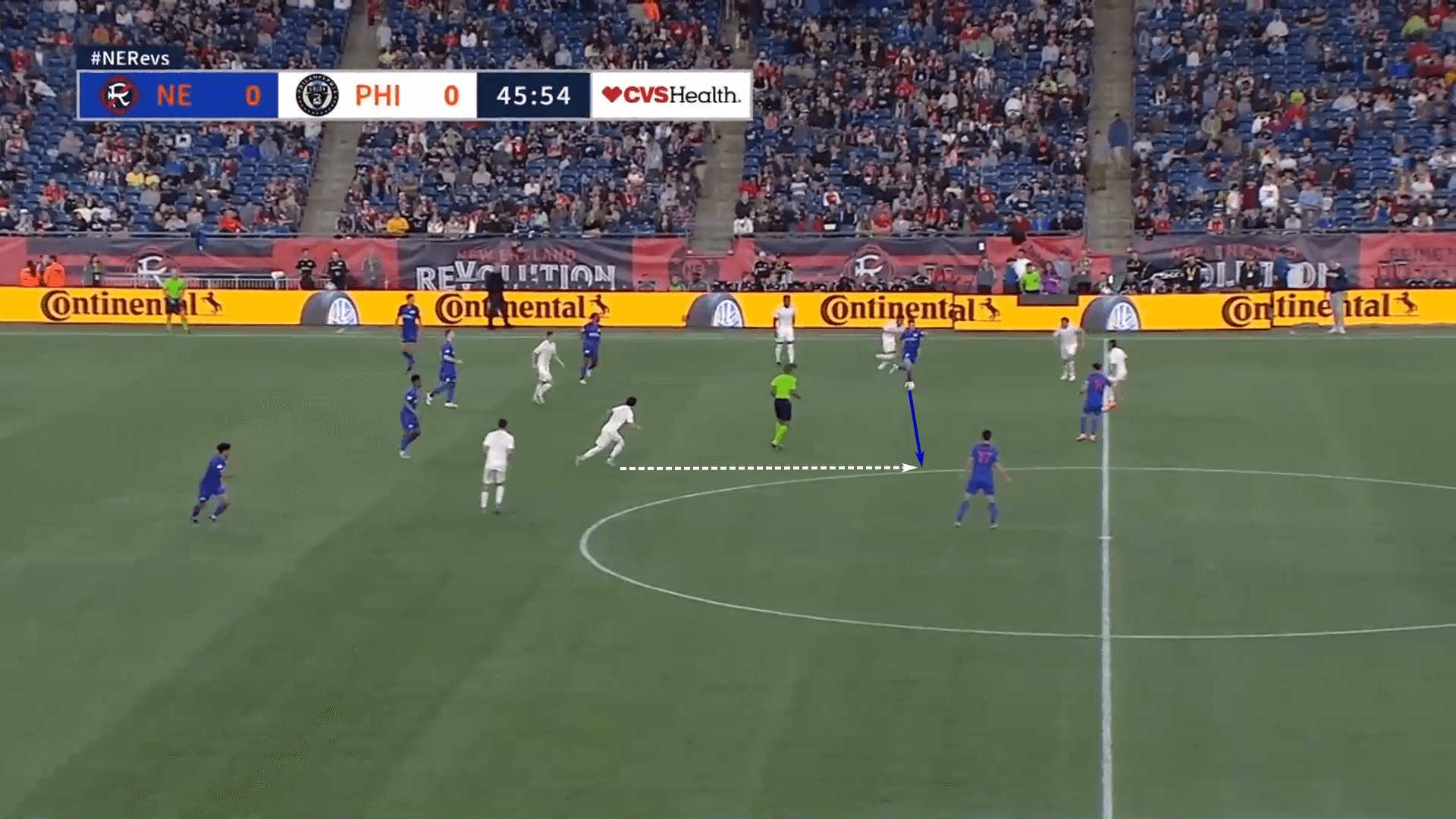
Work rate is a family trade for the Aaronsons. Rumour has it that Brenden finished in the top 1% in distance covered. That number doesn’t just include the Austrian Bundesliga; it factors in every top league in the world.
Paxten isn’t quite at that level, but he’s more than willing to go the extra distance to track down opponents. While he isn’t the most physical player, he can be quite the pest when he’s in a first defender role, and I mean that in the most complimentary sense. He’s quick and feisty, making it difficult for larger and stronger opposition to make clean contact with him.
Orlando City recently got a glimpse of his tenacity. In image one, Aaronson is behind the play, but ready to track down his opponent. By image two he has made contact, which continues through image three, forcing his opponent to loft a hopeful ball up the pitch. Because the delivery is rushed, contact isn’t clean and Aaronson’s nearest teammate is able to bring the ball down for a very simple interception.
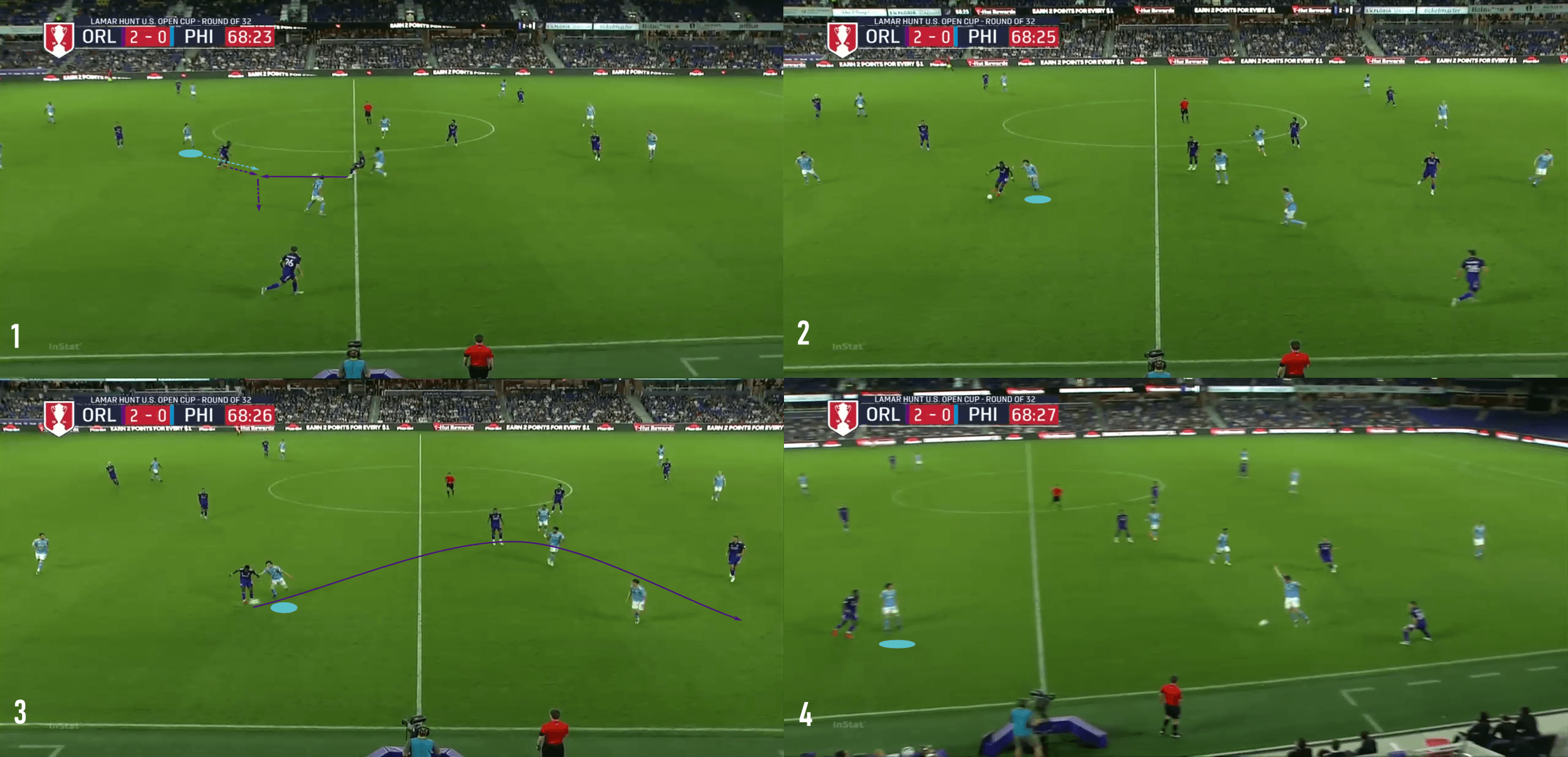
Watching Aaronson defend, he’s very aware of his limitations. Rather than relying on physicality, you’ll see him actively searching for the moment he can get around his opponent and poke the ball away. The poke tackle does seem to be his go-to, which will likely keep him healthy and on the pitch. In the final image of our analysis, he’s just behind his opponent as he starts his tackle, but as his opponent shifts the ball to his right foot, Aaronson uses his quickness and agility to slide his right foot in front of his opponent to poke the ball away.
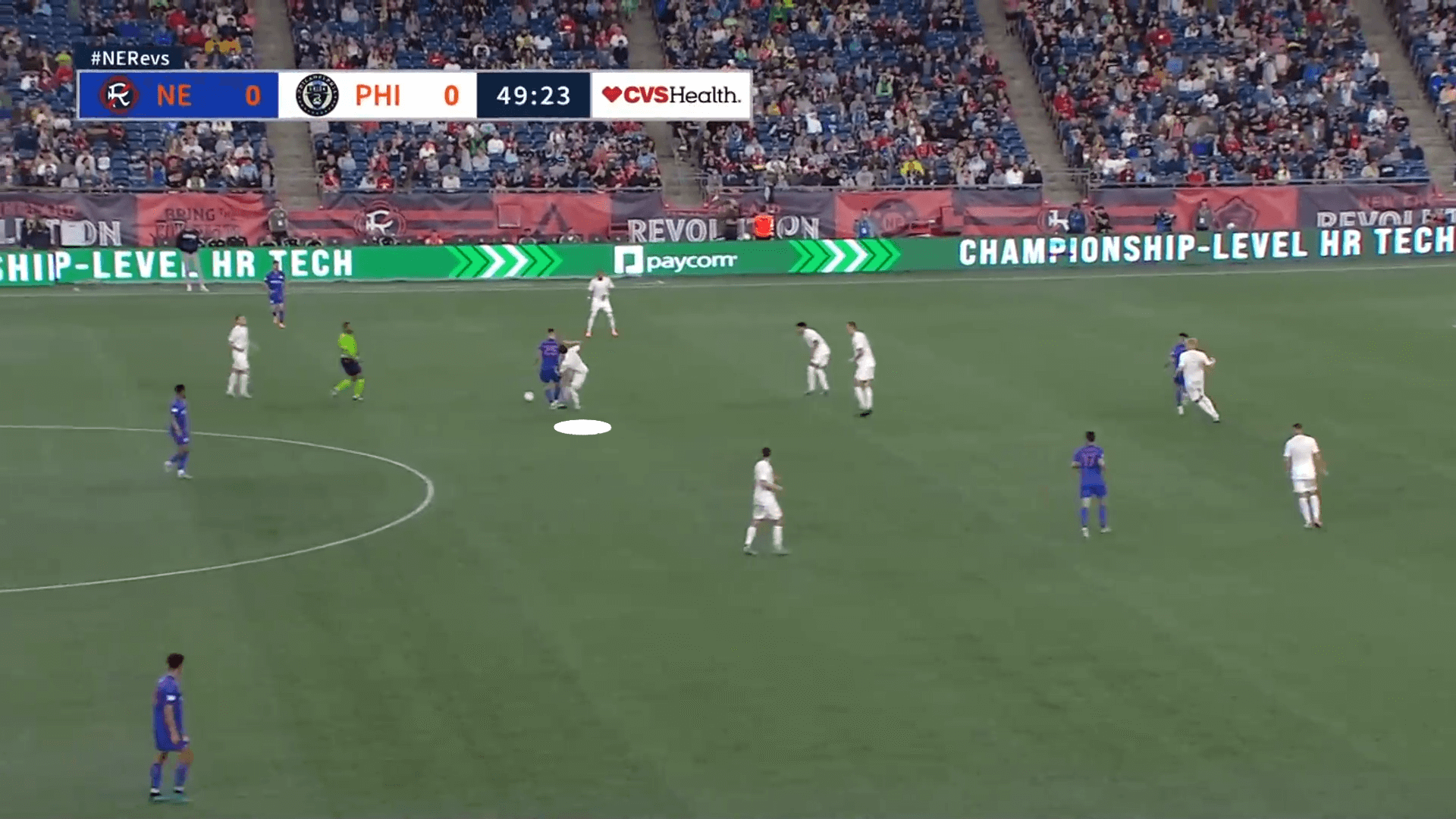
As he continues to develop physically and makes small adjustments to his tackling technique, especially his first point of contact, this is an area of his game that could see considerable improvement.
Conclusion
One of the USA’s brightest young talents, Aaronson’s three combined goals against Costa Rica and Honduras have the U20s one win away from the CONCACAF U20 title. The victory against Honduras means the USA men’s team will play in the Olympics after three consecutive absences, dating back to their last appearance in 2008. They’ll play the tournament Cinderella story, the Dominican Republic in the championship game on Sunday.
When Aaronson returns to Philadelphia, he will hope to bring this run of form with him. The CONCACAF U20 championship has been the confidence booster the youngster needed.
Though time will tell how long he remains in Philadelphia, his stay cements the Aaronson legacy at the club and points to a future with two full internationals in the family. The brothers Aaronson are a remarkable story. With Brenden earning a big transfer to Leeds United, Red Bull Salzburg will be tempted to make a like-for-like substitution.
Paxton’s time in the spotlight is coming. He will look to claim some silverware on 3 July, then show his quality as he returns to the Philadelphia Union.

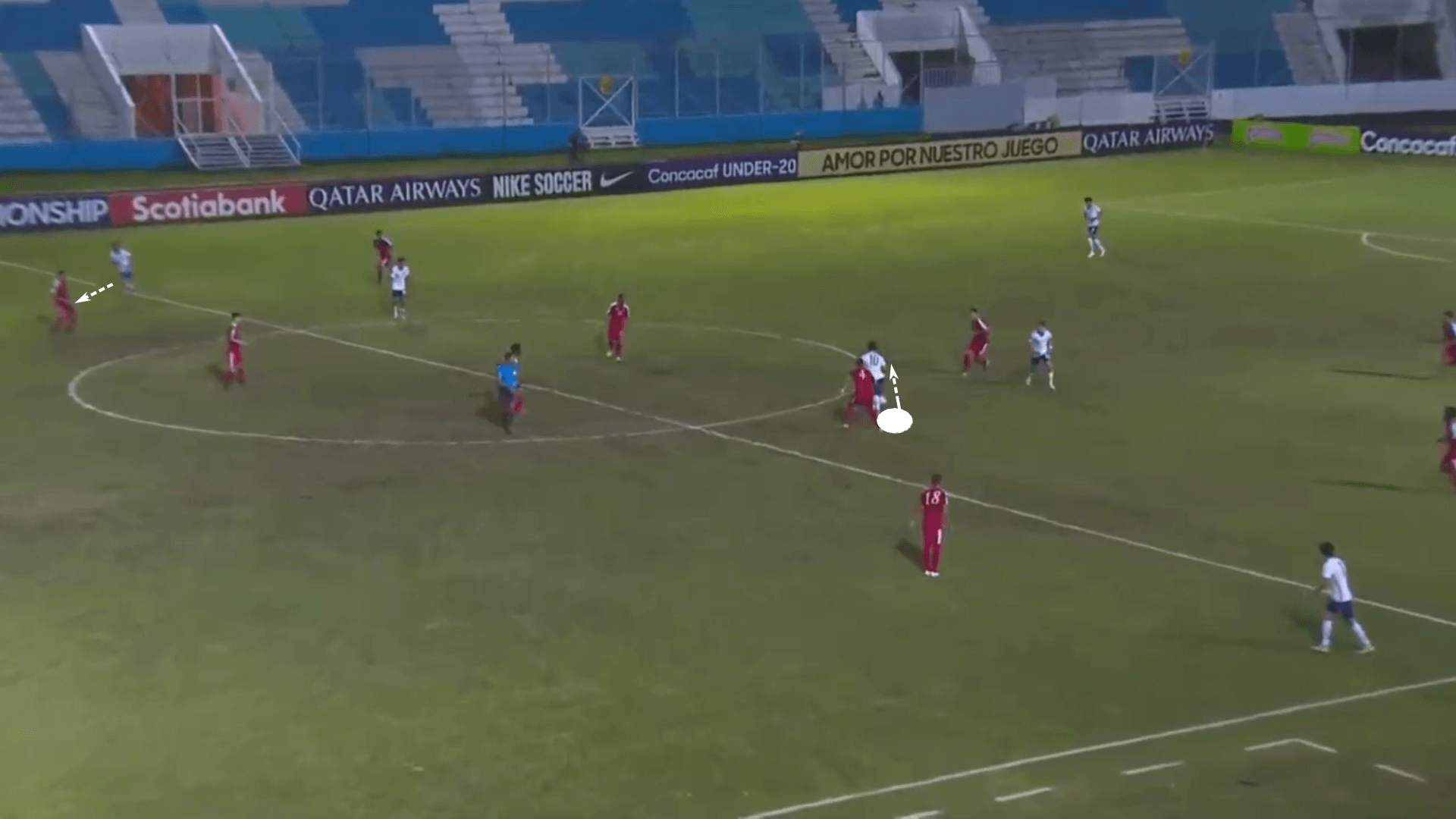



Comments